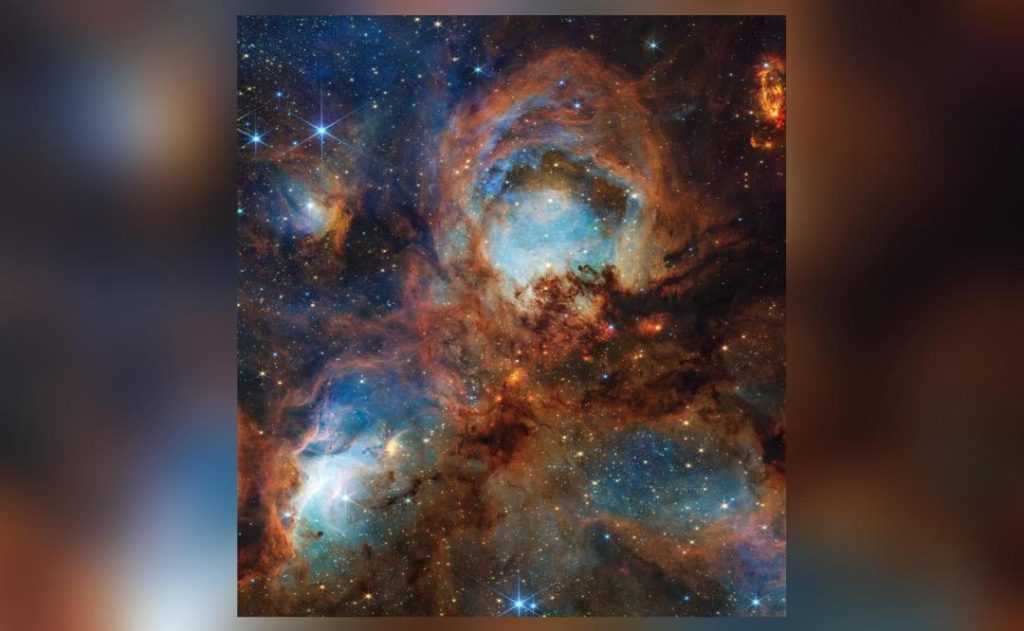
NASA Shares Pic of Cat’s Paw Nebula to Mark 3rd Anniversary of Webb Telescope
NASA’s James Webb Space Telescope has been wowing the world with its breathtaking images of the cosmos since its launch in 2019. And to mark its third anniversary, the space agency has shared a stunning picture of the Cat’s Paw Nebula, a stunning star-forming region in the constellation Scutum.
The Cat’s Paw Nebula, also known as NGC 6334, is a complex region of interstellar gas and dust, with multiple generations of stars scattered throughout. The nebula is about 5,500 light-years away from Earth, making it a fascinating target for astronomers to study. The new image was captured by the Near-Infrared Camera (NIRCam) on the James Webb Space Telescope, which has been designed to detect the faint light emitted by objects in the distant universe.
According to NASA, the NIRCam was focused on a single “toe bean” within the Cat’s Paw Nebula, revealing a subset of mini toe beans that appear to contain young stars shaping the surrounding gas and dust. These mini toe beans are actually dense regions of gas and dust that are collapsing under their own gravity, leading to the formation of new stars.
The image shows a vibrant tapestry of colors, with the young stars shining brightly in shades of blue and white. The surrounding gas and dust are illuminated by the intense radiation emitted by these stars, creating a breathtaking display of cosmic beauty. The image also highlights the intricate structure of the nebula, with tendrils of gas and dust stretching out like wispy fingers.
Dr. Jane Rigby, the Webb telescope’s operations project scientist, said in a statement: “We’re thrilled to share this new image of the Cat’s Paw Nebula to celebrate the James Webb Space Telescope’s third anniversary. The telescope has been operating flawlessly, and this image showcases its incredible capabilities.”
The James Webb Space Telescope was launched on December 25, 2018, and began its scientific operations in June 2019. Since then, it has captured stunning images of the cosmos, revealing new insights into the formation of stars and galaxies. The telescope’s infrared capabilities have allowed it to peer through dust and gas, uncovering hidden regions of the universe that were previously invisible to us.
The Cat’s Paw Nebula is just one of many exciting targets that the James Webb Space Telescope has observed since its launch. Other notable targets include the Carina Nebula, the Tarantula Nebula, and the distant galaxy GN-z11, which is seen as it was just 400 million years after the Big Bang.
As the James Webb Space Telescope continues to explore the universe, it is likely to reveal even more stunning images and discoveries. Its infrared capabilities make it an ideal tool for studying the formation of stars and galaxies, as well as the composition of distant exoplanets.
In conclusion, the new image of the Cat’s Paw Nebula is a stunning reminder of the incredible capabilities of the James Webb Space Telescope. As we continue to explore the universe, we are reminded of the awe-inspiring beauty and complexity of the cosmos. Here’s to many more years of exciting discoveries and stunning images from the James Webb Space Telescope!






